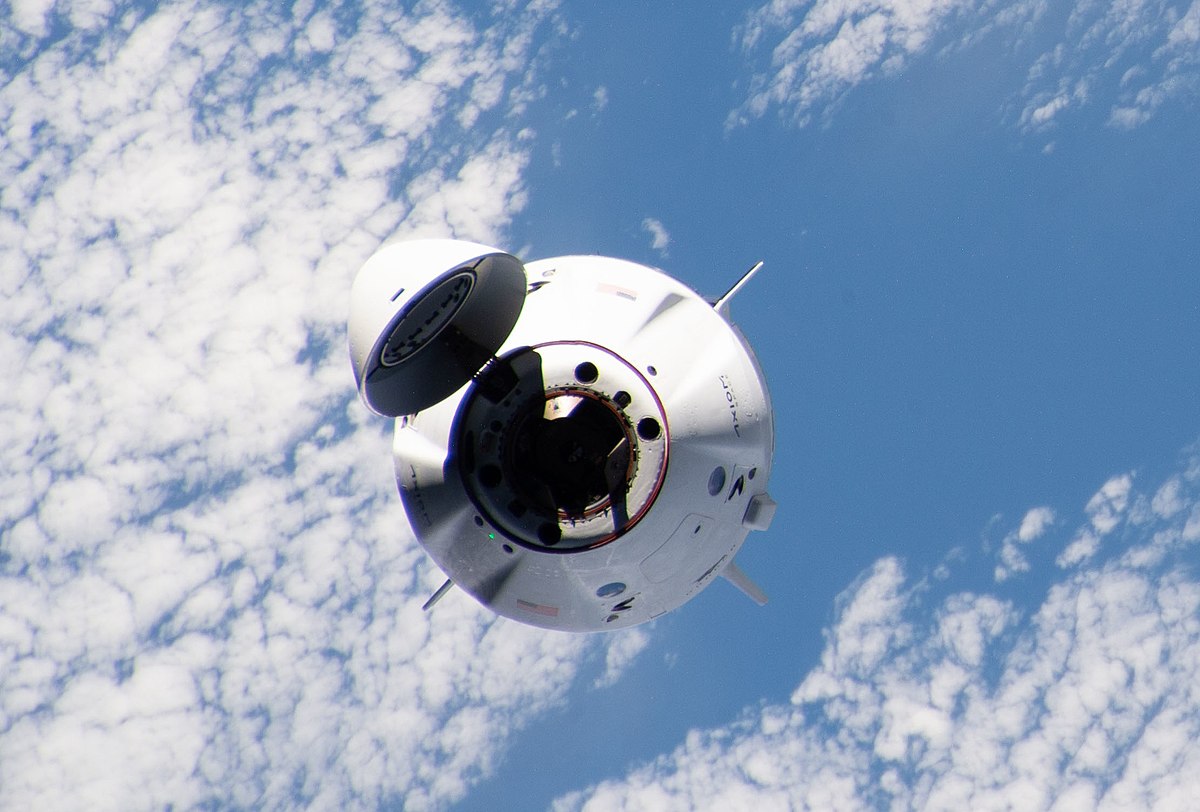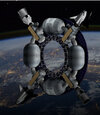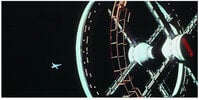Welcome to Tesla Motors Club
Discuss Tesla's Model S, Model 3, Model X, Model Y, Cybertruck, Roadster and More.
Register
Install the app
How to install the app on iOS
You can install our site as a web app on your iOS device by utilizing the Add to Home Screen feature in Safari. Please see this thread for more details on this.
Note: This feature may not be available in some browsers.
-
Want to remove ads? Register an account and login to see fewer ads, and become a Supporting Member to remove almost all ads.
You are using an out of date browser. It may not display this or other websites correctly.
You should upgrade or use an alternative browser.
You should upgrade or use an alternative browser.
Discussion of Space Tourism and Commercialization
- Thread starter Grendal
- Start date
Any idea who the passengers will be?

Electroman
Well-Known Member
Axiom Mission 1
From Wikipedia, the free encyclopediaAxiom Mission 1 (or Ax-1)[2] is a planned SpaceX Crew Dragon mission to the International Space Station (ISS), operated by SpaceX on behalf of Axiom Space. The flight will launch on 21 February 2022 and send four people to the ISS for an eight-day stay:[2][3] Michael López-Alegría,[4] a professionally trained astronaut hired by Axiom Space, Eytan Stibbe[5] from Israel,[6] Larry Connor from the United States[6] and Mark Pathy from Canada.[6]
It had been anticipated that Tom Cruise and Doug Liman would be passengers for a movie project,[7] but it was later announced they will fly on a subsequent flight.[8]
Not to be outdone by Tom Cruise, the Russians are making their movie first!

www.nytimes.com

Russian Actress and Director to Start Making First Movie on Space Station
The pair arrived at the International Space Station on Tuesday, aiming to shoot scenes for the first feature film made in orbit.www.nytimes.com
adiggs
Well-Known Member
Not to be outdone by Tom Cruise, the Russians are making their movie first!

Russian Actress and Director to Start Making First Movie on Space Station
The pair arrived at the International Space Station on Tuesday, aiming to shoot scenes for the first feature film made in orbit.
www.nytimes.com
I like these kinds of races. In a twisted sort of way, at least in my mind, its the same sort of race that left me pissed that Colorado and Washington beat my state - Oregon - to legalizing recreational marijuana. At least we got psilocybin legalized before they did!
This is a good kind of race.

Space Adventures no longer planning Crew Dragon flight
Space Adventures has dropped plans to fly space tourists on a high-altitude Crew Dragon flight but has not ruled out doing the mission in the future.
 spacenews.com
spacenews.com

Axiom Space outlines research plans for first ISS mission
The three private astronauts on Axiom Space’s first mission to the space station next February will perform more than 100 hours of research on their flight.
 spacenews.com
spacenews.com
Electroman
Well-Known Member
Just curious - why did the Japanese tycoon who with much fanfare was announced by SpaceX & Musk on going around the moon - Dear Moon project - decided to fly to ISS on a Soyuz instead of Dragon?
It was paid for and planned before a tourism Crew Dragon visiting the ISS was a possibility.Just curious - why did the Japanese tycoon who with much fanfare was announced by SpaceX & Musk on going around the moon - Dear Moon project - decided to fly to ISS on a Soyuz instead of Dragon?
No wings for you!!

 spacenews.com
spacenews.com

FAA to end commercial astronaut wings program
The FAA will stop awarding commercial astronaut wings at the end of this year, five months after it revised the criteria for receiving the wings.
 spacenews.com
spacenews.com

Soyuz returns from private astronaut mission to the ISS
A Soyuz spacecraft carrying a Russian cosmonaut and two Japanese private astronauts returned to Earth late Dec. 19.
 spacenews.com
spacenews.com
Axiom 1 is being finalized and a date of March 30th for launch.

 www.nasa.gov
www.nasa.gov

NASA, Space Station Partners Approve First Axiom Mission Astronauts - NASA
NASA and its international partners approved crew members for Axiom Space’s first private astronaut mission to the International Space Station. The flight,
Axiom 1 details:

 www.nasaspaceflight.com
www.nasaspaceflight.com

SpaceX and Axiom in final preparations for all-commercial Axiom-1 mission - NASASpaceFlight.com
With the launch just weeks away, SpaceX and Axiom are making their final preparations for…
Just discovered this company Orbital Assembly Corporation.
Their plans are ambitious, to put it mildly. First, a rotating ring-shaped space station with four modules that can accommodate 28 people. “Planned first operation as soon as 2025”.
Sure. The lift capacity for that design does not currently exist, every launch provider is booked out for years. Even with a fully reusable launch vehicle the total cost to build it is huge. Even if Starship starts flying regularly in 2024 that timeline seems impossible. Such a station will require a lot of EVAs to assemble.
Then a much bigger version to follow (second image below). 200m diameter to accommodate over 400 people. Obviously 2001 inspired with ship docking at the hub.
The solar arrays are fixed on one side of the ring so the station will need to be constantly adjusting for optimal solar angle. That is going to take some energy. I question whether those arrays have enough surface area to supply the needed power for all station functions.
Their plans are ambitious, to put it mildly. First, a rotating ring-shaped space station with four modules that can accommodate 28 people. “Planned first operation as soon as 2025”.
Sure. The lift capacity for that design does not currently exist, every launch provider is booked out for years. Even with a fully reusable launch vehicle the total cost to build it is huge. Even if Starship starts flying regularly in 2024 that timeline seems impossible. Such a station will require a lot of EVAs to assemble.
Then a much bigger version to follow (second image below). 200m diameter to accommodate over 400 people. Obviously 2001 inspired with ship docking at the hub.
The solar arrays are fixed on one side of the ring so the station will need to be constantly adjusting for optimal solar angle. That is going to take some energy. I question whether those arrays have enough surface area to supply the needed power for all station functions.
Attachments
The solar arrays are fixed on one side of the ring so the station will need to be constantly adjusting for optimal solar angle. That is going to take some energy. I question whether those arrays have enough surface area to supply the needed power for all station functions.
A few random things that come to mind:
1. Its worth noting that renderings of aspirational things like space stations--especially when released far in advance of any actual hardware manufacturing--are not necessarily rooted in deep engineering, so its premature to claim foul on the size of an array with just that data point.
2. By far the biggest power draw for space objects is high power communications--look at Starlink or geocomm sats and they all have proportionally large solar arrays vs something like an imaging (optical, SAR, etc) sat. An orbiting space station is not going to have that comms-level disproportionately high power-to-size ratio, nor would one figure it has a particularly demanding thermal environment (if you need to actually create heat on board its all resistive and that can get power hungry, and obviously you'd want to avoid that), so its pretty fair to assume a forward-looking design would have a pretty 'visually small' power system, all things considered.
3. Its worth noting that nobody's ever built a mega space station, so control of such a platform is going to be breaking new ground regardless. One could assume its just scaling of existing concepts (spinning wheels, leveraging earth's magnetic field, etc.), but its such a huge step that there may be other variables at play.
4. An object does not need to fly in an intuitive orientation like, for instance, something in the atmosphere. Most to-date space vehicles point toward earth (for obvious reasons) but a space station doesn't have that limitation. So...that space station can be oriented in an intuitively wonky attitude that, for instance, maximizes sun exposure (either a static orientation or with some dynamic sun tracking).
5. Attitude control/pointing, at least for to-date space vehicles, is largely zero-sum energy if the maneuvers are there-and-back-again. (= spinning into a new orientation B and then spinning back to the original orientation A).
6. At least from a power generation perspective, a mega space station in LEO would benefit greatly from flying sun synchronous near the terminator--that would put it in basically full sunlight all the time, which would significantly reduce the size of the power system (fewer solar cells, fewer batteries) and would also make the thermal environment much more stable and thus much more manageable. (It would also generally minimize drag and maximize gravity gradient too...though the radiation environment is worse).
"In a nascent industry, constant experimentation and embracing failure are critical to developing reliable systems. You can’t regulate safety into an immature system; you need to develop it from lessons learned. No number of reviews, hearings or committees could make the space shuttle a truly safe vehicle. Moving slower and flying it less reduced learning. Flight cadence is critical to finding better designs and best practices."Here's a pretty solid op-ed on space regulation.
(This seems like the most applicable thread)

NASA revises requirements for ISS private astronaut missions
NASA is changing rules for future private astronaut missions to the ISS, including requiring such missions to be led by a former NASA astronaut.
 spacenews.com
spacenews.com
Similar threads
- Replies
- 4
- Views
- 384
- Replies
- 3
- Views
- 653
- Replies
- 0
- Views
- 721





